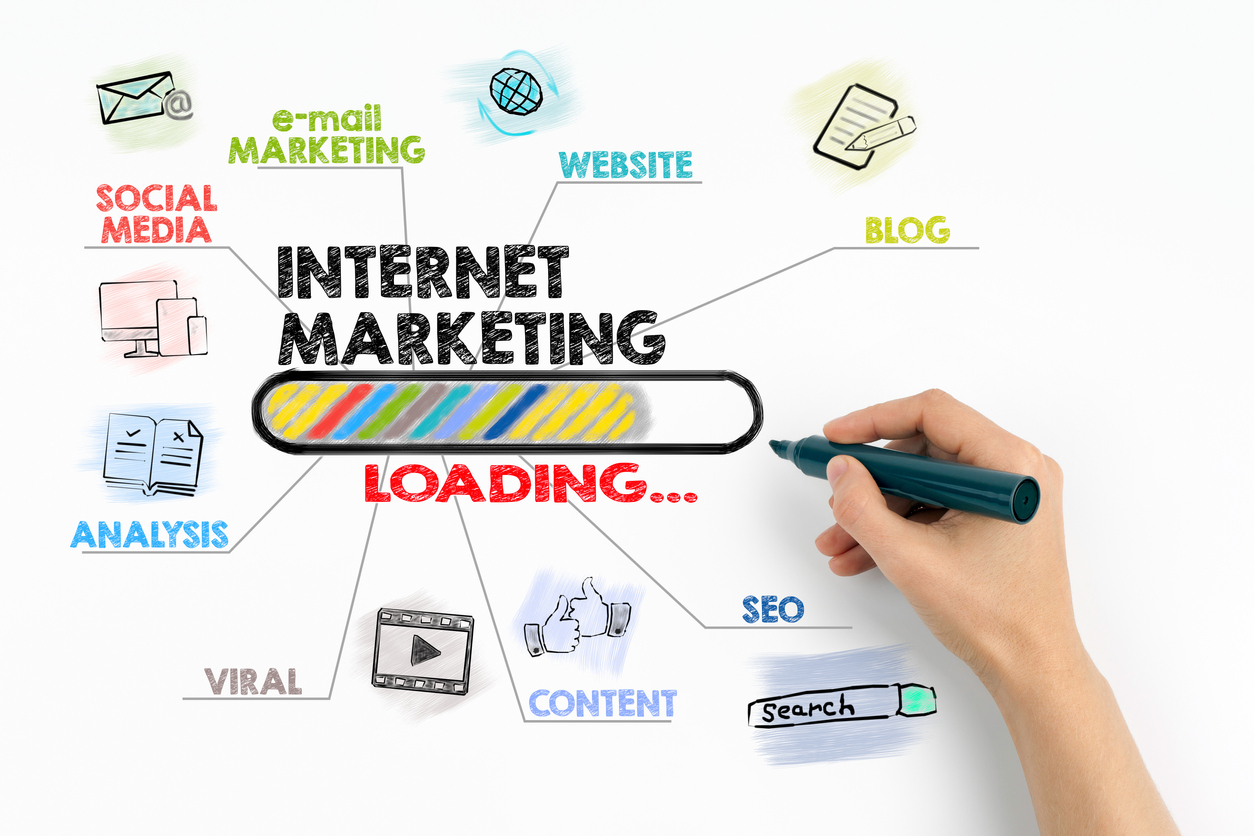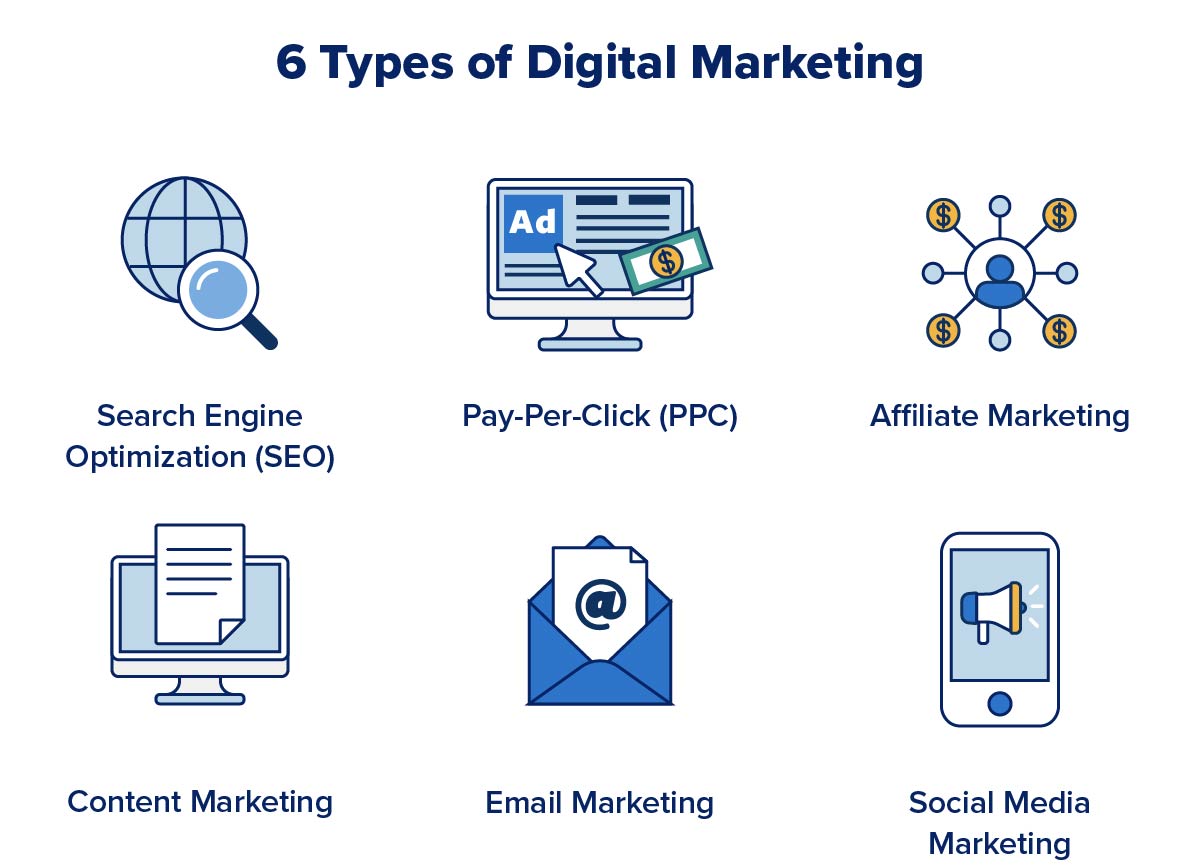In a digital age where the vast majority of consumers live and breathe online, the significance of online advertising cannot be overstated. Online advertising is the lifeblood of many businesses, offering a dynamic and expansive platform to reach potential customers like never before. For entrepreneurs, small businesses, and digital marketers, understanding and capitalizing on the world of online advertising is essential to building brand recognition, driving traffic, and ultimately increasing sales.
Mục lục
- 1. Introduction to Online Advertising
- 2. Understanding the Online Advertising Landscape
- 3. Developing an Effective Online Advertising Strategy
- 4. Implementing Techniques for Each Advertising Type
- 5. Integrating Online Advertising with Overall Digital Strategy
- 6. Best Practices for Effective Online Advertising
- 6.1. Optimizing for Mobile Users
- 6.2. Utilizing Data Analytics
- 6.3. Prioritizing User Experience
- 6.4. Adhering to Privacy Regulations
- 6.5. Continuously Testing and Learning
- 6.6. Creating Compelling Ad Creatives
- 6.7. Ensuring Ad Relevance and User Experience
- 6.8. Optimizing Landing Pages and Funnels
- 6.9. Continuous A/B Testing and Optimization
- 7. Conclusion
This comprehensive guide will walk you through the intricacies of online advertising, from a rundown of the various platforms to crafting a killer strategy. We’ll explore the types of advertising that exist, key performance metrics, and the most effective targeting techniques — all ending with a suite of best practices to ensure your digital campaigns are seamless and impactful.
Introduction to Online Advertising

Online advertising is any form of marketing that occurs on the internet. While traditional advertising methods like billboards, print ads, and TV commercials are still effective, digital advertising has become increasingly popular due to its ability to reach a wider audience at a lower cost.
There are several platforms available for online advertising, each with their own unique features and benefits. These include search engine advertising (such as Google AdWords), social media advertising (like Facebook Ads), display advertising (using banner ads or pop-ups), video advertising (through platforms like YouTube), and email marketing.
Understanding these different platforms and how they work together can help you create a cohesive online ad strategy that will effectively target your desired audience.
Types of Online Advertising
Search Engine Advertising:
Search engine advertising
Online advertising, at its core, is a way to leverage the power of the internet to deliver promotional marketing messages to consumers. It encompasses a wide range of formats, including search engine marketing (SEM), social media marketing (SMM), email marketing, and display ads, among others. The beauty of online advertising lies in its versatility and measurability, allowing marketers to reach a vast audience with precision and to tweak campaigns in real time based on performance data.
The first step in crafting an effective online advertising strategy is to clearly define your objectives. Are you looking to boost brand awareness, generate leads, drive website traffic, or increase sales? Once objectives are set, you can select the platforms and ad formats that best align with your goals. For instance, SEM is excellent for driving targeted traffic quickly, while social media and content marketing are more suited for building brand engagement over time.
Understanding your audience is another crucial element. By leveraging data analytics, you can gain insights into your audience’s preferences, behaviors, and online habits, helping you to tailor your messaging and ad placements for maximum impact.
Defining Online Advertising
Online advertising is a marketing strategy that uses the internet to deliver promotional marketing messages to consumers. It encompasses a broad range of activities, including search engine marketing, social media marketing, display advertising, email marketing, and mobile advertising.
The Importance of Online Advertising
In the digital marketplace, online advertising levels the playing field for businesses of all sizes. It’s a direct conduit to consumers, providing measurable results and opportunities for personalization. An effective online advertising campaign drives engagement, floods your sales funnel, and can lead to a significant return on investment.
Popular Online Advertising Platforms
In today’s online arena, numerous platforms can host your ad content. Google Ads, Facebook Ads, and LinkedIn Ads are just a few of the most prominent players in the game, each offering unique advantages and targeting capabilities.
Understanding the Online Advertising Landscape

The landscape of online advertising is continually evolving, influenced by changes in consumer behavior, technological advancements, and shifts in social media dynamics. One of the significant trends is the increasing emphasis on privacy and data protection, leading advertisers to find innovative ways to reach their audience without compromising user trust. Additionally, the rise of video content has reshaped how brands engage with their customers, making video ads a critical component of modern digital marketing strategies. Artificial intelligence (AI) and machine learning are also playing pivotal roles, enabling more precise targeting and personalization than ever before.
To remain competitive in this dynamic environment, businesses must stay abreast of these trends and adapt their strategies accordingly. This involves not only selecting the right platforms and ad formats but also investing in creative content that captures the audience’s attention and conveys a compelling message. By focusing on creating a genuine connection with consumers and leveraging the latest technologies, advertisers can maximize the impact of their online campaigns and achieve their marketing objectives.
Types of Online Advertising
Online advertising manifests in various forms that cater to different objectives and audiences. Here are some of the most common types:
- Display Advertising: Banner ads and pop-up ads that appear on websites or apps.
- Search Engine Advertising (PPC): Advertisements that show up in search engine results, usually on top or bottom of the page.
- Social Media Advertising: Promotions that appear on social networks, tailored to specific audience segments.
- Native Advertising: Promotional content that matches the design and function of the platform where it appears.
- Video Advertising: Engaging video content that runs before, during, or after video content.
Key Metrics and KPIs
Understanding how to measure the success of your online advertising is crucial. Metrics and Key Performance Indicators (KPIs) include impressions, click-through rate (CTR), conversion rate, cost per click (CPC), cost per acquisition (CPA), and return on investment (ROI).
Developing an Effective Online Advertising Strategy

Developing an effective online advertising strategy requires a deep understanding of your target market, a clear set of goals, and a thorough knowledge of the digital landscape. The strategy should start with defining your target audience: know who they are, what they like, where they spend their time online, and what kind of content they engage with. This information is critical in choosing the right platforms and ad formats for your campaigns.
Next, set specific, measurable objectives for what you wish to achieve. This could range from increasing brand awareness to boosting sales or generating leads. Each goal will dictate a different approach in terms of ad creatives, budget allocation, and performance metrics.
Budgeting wisely is another key aspect. Online advertising offers the advantage of starting small and scaling up as needed, allowing for flexibility in budget management. Distribute your budget across different channels and ad formats to see what works best, then adjust your spending based on performance data.
Creative content that resonates with your audience is at the heart of a successful campaign. Your ads should be engaging, informative, and compelling, prompting viewers to take action. Test different messages and visuals to find the most effective combinations.
Lastly, monitoring and optimizing your campaigns is essential. Use analytics tools to track performance and identify areas for improvement. Testing different variables, such as ad copy, landing pages, and audience segments, will help refine your strategy and improve overall effectiveness.
By following these steps and staying up to date with online advertising trends, you can create a powerful strategy that meets your business objectives and drives significant results.
Setting Clear Objectives
An effective online advertising strategy begins with clear objectives. Whether it’s to improve brand awareness, generate leads, make direct sales, or retain customers, your strategy must be tailored to these goals.
Audience Targeting
Laser-focused advertising starts with knowing who you’re targeting. Utilize demographic, behavioral, and contextual targeting, along with retargeting methods, to ensure you’re reaching the right people at the right time with the right message.
Ad Placement and Optimization
The platform and location of your ad can significantly impact its performance. Invest time in selecting the best advertising platform for your objectives, creating compelling ad designs, and continually optimizing your placements to achieve the highest potential reach.
Measuring and Analyzing Campaign Performance
Nothing is more important in the digital realm than data. Measure and analyze the performance of your campaigns, identify trends and correlations, and use these insights to refine your strategy and achieve better results.
Leveraging Trends and Best Practices
Staying ahead of the curve means keeping up with the latest trends and best practices in online advertising. Programmatic advertising, mobile and video advertising, influencer marketing, and personalized ad content are on the rise and offer promising horizons for marketers.
Implementing Techniques for Each Advertising Type

Effective implementation of techniques for each type of online advertising is crucial for maximizing the impact of your campaigns. Here’s how to approach each one:
- Display Advertising: Focus on eye-catching designs and strategic placement on relevant websites. Utilize retargeting to stay in front of interested users who have visited your site but haven’t converted yet.
- Search Engine Advertising (PPC): Use keyword research to target ads based on what your potential customers are searching for. Write compelling ad copy that speaks to their needs and encourages them to click through to your website.
- Social Media Advertising: Tailor your ads to fit the social platform and the specific demographics of your audience there. Engaging visuals and personalized messages perform best.
- Native Advertising: Ensure that your content adds value to the user’s experience on the platform. It should blend in seamlessly, yet stand out enough to pique interest.
- Video Advertising: Create content that is engaging and tells a story within the first few seconds to keep viewers interested. Consider the platform’s specifications (such as video length and format) to optimize viewer engagement.
For each advertising type, it’s important to continuously test and tweak your techniques based on performance data. This agile approach allows for real-time optimization and can significantly enhance the effectiveness of your online advertising efforts.
Display Advertising
For a successful display advertising campaign, prioritizing engaging visuals, attention-grabbing copy, and a clear call to action makes all the difference. Strategic placement on high-traffic sites combined with ongoing optimization can lead to impressive results.
Search Engine Advertising (PPC)
Search engine advertising, especially pay-per-click (PPC) campaigns, can be a goldmine for businesses looking to increase their visibility. Focus on keyword research, targeting the right audience, and continuous refinement to maximize the effectiveness of your ads.
Social media allows for highly targeted, interactive advertising. Understanding the nuances of each platform, creating share-worthy content, and fostering a community can turn a social media ad campaign into a movement.
Programmatic Advertising
Automated bidding and ad placement, the heart of programmatic advertising, utilize real-time data to make split-second decisions. This powerful tool can scale campaigns efficiently and target audiences with unprecedented precision.
Native Advertising
To seamlessly blend in with their platform, native ads must offer value to the reader. Transparency is key here — consumers are more likely to engage with native ads that they perceive as genuine content.
Video Advertising
The storytelling potential of video ads is immense. Craft a narrative that embodies your brand while keeping it short and sweet to capture your audience’s attention in those few crucial seconds before they have a chance to skip.
Integrating Online Advertising with Overall Digital Strategy

Integrating online advertising into your overall digital strategy requires a holistic view where each component works synergistically to achieve your business goals. This means aligning your content marketing, SEO strategies, social media activities, and online advertising efforts to create a cohesive user experience across all digital touchpoints. It’s vital to understand the customer journey and leverage each advertising medium to guide potential customers through the sales funnel effectively. By creating a unified message that is consistently presented across various channels, businesses can increase brand awareness, boost engagement, and drive conversions more efficiently. Coordination between teams and the use of integrated marketing platforms can help ensure that efforts are not siloed but are contributing to the broader objectives of the company.
Your online advertising isn’t an island. It should integrate closely with other digital marketing efforts, such as content marketing, email campaigns, and SEO. Cross-promote and ensure a cohesive customer experience across all channels.
Best Practices for Effective Online Advertising

Optimizing for Mobile Users
In today’s digital age, optimizing online advertising for mobile users is non-negotiable. With the majority of internet users accessing the web via mobile devices, ads need to be responsive and tailored for smaller screens. This includes simplifying designs, ensuring fast loading times, and utilizing mobile-specific features like click-to-call. Remember, an ad that performs well on desktop won’t necessarily translate to success on mobile.
Utilizing Data Analytics
The power of online advertising lies in its ability to be measured and optimized based on data. Utilizing analytics tools can provide insights into who your audience is, how they interact with your ads, and which campaigns are the most effective. By analyzing this data, marketers can make informed decisions to tweak their strategies, targeting, and content to better meet the needs of their audience and achieve higher returns on investment.
Prioritizing User Experience
User experience should be at the core of your online advertising strategy. Ads that are intrusive, irrelevant, or slow to load can frustrate users and damage brand reputation. Instead, focus on creating ads that add value, are relevant to the user’s interests, and enhance their online experience. Well-designed ads that respect the user’s time and attention will not only perform better but also contribute positively to brand perception.
Adhering to Privacy Regulations
With increasing concerns over digital privacy, adhering to data protection regulations has become essential. Marketers must ensure their online advertising practices comply with regulations such as GDPR in Europe and CCPA in California. This includes obtaining user consent for cookies, being transparent about data collection practices, and providing options for users to opt-out. Respecting user privacy is not just a legal requirement but also builds trust with your audience.
Continuously Testing and Learning
The digital landscape is constantly evolving, and what works today may not work tomorrow. Continuously testing different aspects of your online advertising campaigns, from ad copy and visuals to targeting options and placement, is vital for staying ahead. A/B testing can help identify what resonates best with your audience, allowing you to optimize future campaigns for better performance.
In conclusion, effective online advertising demands a strategic approach that incorporates best practices tailored to the digital medium. By focusing on mobile optimization, leveraging data analytics, prioritizing user experience, adhering to privacy regulations, and committing to ongoing testing and learning, businesses can maximize the impact of their online advertising efforts.
Creating Compelling Ad Creatives
Strive for relevancy and creativity in your ad copy and designs. Implement clear calls-to-action that tell the viewer exactly what action to take next.
Ensuring Ad Relevance and User Experience
Relevance scores play a significant role in the effectiveness and cost of your ads. Ensure they align with the landing page content and overall user experience for a seamless customer journey.
Optimizing Landing Pages and Funnels
Your ads’ role isn’t complete until they convert. Optimize landing pages for maximum conversions by conducting A/B testing, refining copy, and streamlining the user experience.
Continuous A/B Testing and Optimization
Don’t rest on your laurels. Regularly test different variables of your ads to extract maximum value. Analyze the results and keep optimizing to stay ahead of the competition.
Conclusion

Online advertising is a dynamic, powerful tool in the modern business arsenal. Craft your campaigns with a clear understanding of your objectives, a nuanced approach to audience targeting, and a relentless commitment to data analysis and optimization.
By implementing the strategies and best practices outlined in this guide, you’re setting the stage for a successful online advertising campaign that can propel your business to new heights of digital engagement and profitability. Remember, the key to lasting success in online advertising lies in adaptability and continuous learning. Stay curious, keep testing, and never be afraid to explore new horizons in the digital advertising landscape.
Now that you’re armed with these insights, go forth and conquer the digital space with confident, strategic, and effective online advertising efforts. Your future customers are waiting to be wowed.
